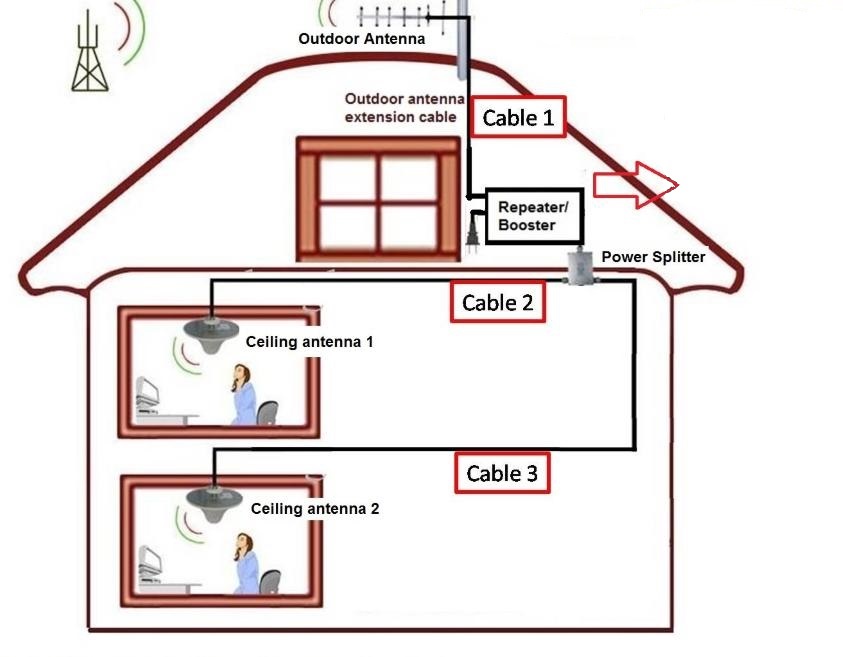-
 DAS Explained
Aug , 31 2024
DAS Explained
Aug , 31 2024
A DAS is a network of antennas, usually in-building, that provides communications over a designated area and is different from a macro tower in that the macro is outdoor and has much higher power covering a wider area. A simple way to understand the difference between a macro tower and a DAS is to consider the difference between a fire hydrant and home faucets. The macro provides massive amounts o...
View more
-
 Come and visit us at our booth——MWC GSMA2025
Jan , 15 2025
Come and visit us at our booth——MWC GSMA2025
Jan , 15 2025
Hefei Mlaniron Electronic and Technology Co., Ltd. cordially invites you to attend the upcoming MWC Barcelonaat our booth number at 7F35.The exhibition wil showcase Maniron's latest technological achievements and innovative products.We believe that this exhibition will not only keep you up to date with the latest developments in the industrybut also provide you with valuable opportunities to estab...
View more
-
 Introduction to BDA System Components: Key Products, Considerations, and Global Insights
Mar , 13 2025
Introduction to BDA System Components: Key Products, Considerations, and Global Insights
Mar , 13 2025
A BDA system amplifies and redistributes weak signals to ensure consistent coverage. Key components include: Regulatory Compliance: Ensure adherence to local standards (e.g., FCC (USA), CE (EU), SRRC (China)) to avoid interference and legal penalties. Interference Management: Use shielded cables and isolators to prevent feedback loops. Signal Balancing: Optimize amplifier gain settings to avoid os...
View more
-
 5G-Advanced Accelerates New Requirements for In-building RF Infrastructure
Apr , 28 2025
5G-Advanced Accelerates New Requirements for In-building RF Infrastructure
Apr , 28 2025
As 5G-Advanced (5G-A) technology emerges, it brings higher speeds, lower latency, and smarter network capabilities, reshaping expectations for in-building wireless systems. Modern facilities—such as offices, airports, and hospitals—now require more advanced Distributed Antenna Systems (DAS) capable of supporting higher frequency bands and broader bandwidths. Traditional infrastructure must evolve....
View more
-
 Which Is Better: Directional Coupler or Tapper?
May , 08 2025
Which Is Better: Directional Coupler or Tapper?
May , 08 2025
In RF and microwave systems, power distribution is a critical aspect that directly impacts system performance, reliability, and design flexibility. Two of the most commonly used passive components for signal splitting and power monitoring are directional couplers and tappers. While they serve similar purposes in many systems, they differ significantly in structure, application, and performance. Un...
View more
-
 Public Safety DAS Solutions: Key RF Components and Applications
Jul , 19 2025
Public Safety DAS Solutions: Key RF Components and Applications
Jul , 19 2025
In the fast-evolving communication industry, Public Safety Distributed Antenna Systems (DAS) play a critical role in ensuring reliable coverage for emergency responders and critical infrastructure. These systems rely on advanced RF components to optimize signal distribution. Three key elements—Yagi Antenna, Power Divider, and Directional Coupler—are essential for their functionality. 1. Yagi Anten...
View more
-
 How to Avoid PIM Interference in DAS Systems
Aug , 07 2025
How to Avoid PIM Interference in DAS Systems
Aug , 07 2025
In Distributed Antenna Systems (DAS), Passive Intermodulation (PIM) is one of the most common yet overlooked causes of performance degradation. While DAS networks are designed to enhance wireless coverage and capacity, PIM can severely compromise signal quality, leading to dropped calls, reduced data throughput, and costly troubleshooting. This article outlines the practical measures and engineeri...
View more
-
 Optimizing Passive Components for Better 5G DAS Coverage
Aug , 13 2025
Optimizing Passive Components for Better 5G DAS Coverage
Aug , 13 2025
With the rapid deployment of 5G in indoor environments, Distributed Antenna Systems (DAS) have become a critical solution to ensure reliable signal coverage. Although passive RF components in DAS are non-powered, their performance directly affects signal transmission quality and overall system stability. Selecting and optimizing these passive components is key to enhancing indoor 5G network covera...
View more
 Come and visit us at our booth——MWC GSMA2025
Jan , 15 2025
Come and visit us at our booth——MWC GSMA2025
Jan , 15 2025
 Introduction to BDA System Components: Key Products, Considerations, and Global Insights
Mar , 13 2025
Introduction to BDA System Components: Key Products, Considerations, and Global Insights
Mar , 13 2025